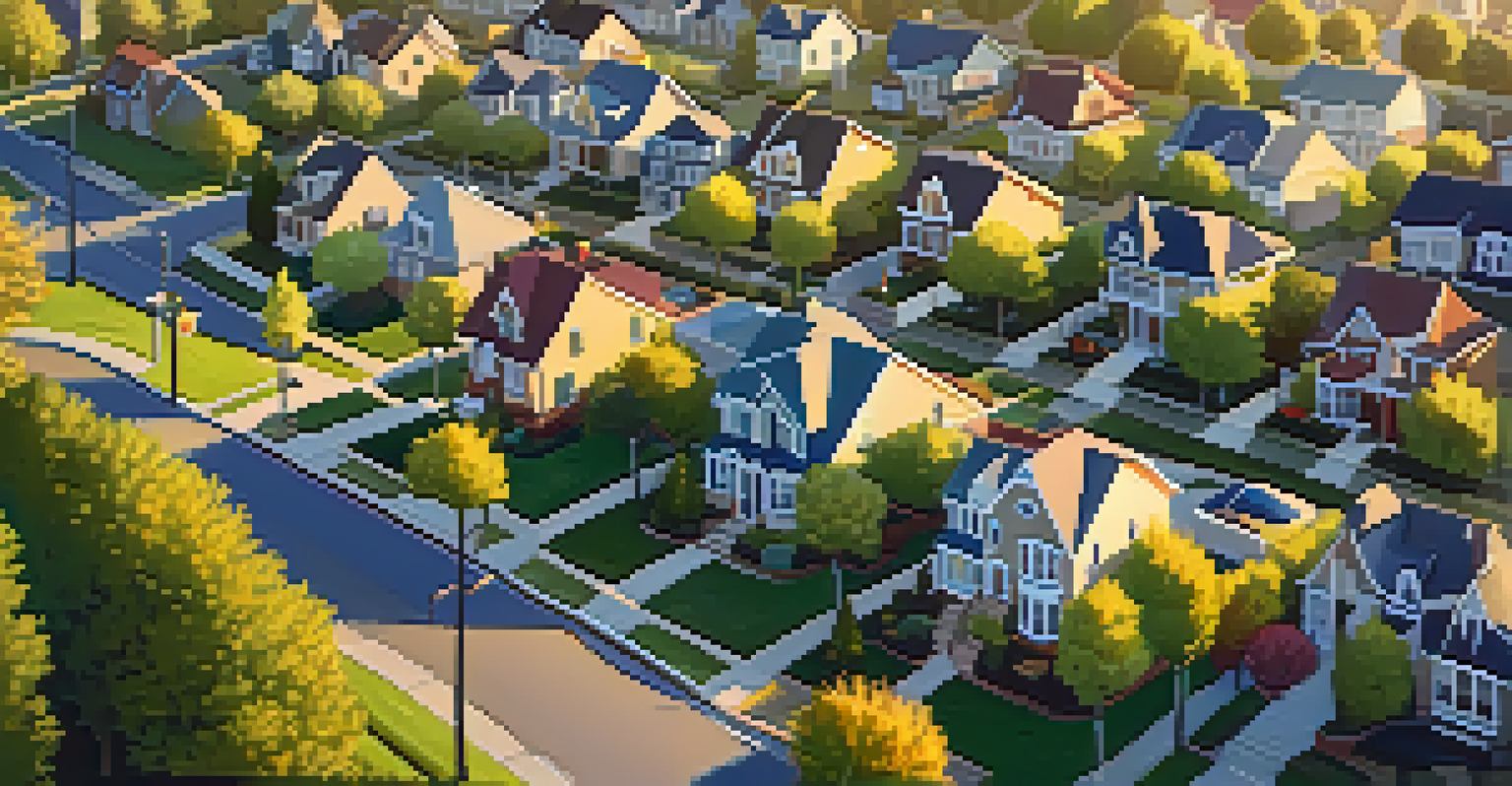How Virtual Tours Increase Property Visibility Online

What Are Virtual Tours and Why They Matter
Virtual tours are immersive, online experiences that allow potential buyers to explore properties from the comfort of their homes. Unlike traditional photos, these tours provide a 360-degree view, giving viewers a realistic feel for the space. This technology is becoming increasingly important in the real estate market, where first impressions can make or break a sale.
Virtual tours are not just a trend; they are a powerful tool that enhances the buyer's experience and provides a level of engagement that static images cannot achieve.
In a world where internet searches dominate property hunting, virtual tours stand out by providing an engaging alternative to static images. They allow potential buyers to visualize themselves in the property, which can significantly influence their decision-making process. As a result, properties with virtual tours often attract more attention compared to those without.
Moreover, virtual tours can be accessed anytime, anywhere, making it easier for interested buyers to revisit the property whenever they want. This convenience not only enhances the buyer's experience but also increases the likelihood of inquiries and viewings, ultimately leading to higher sales potential.
Increasing Engagement with Interactive Features
One of the most appealing aspects of virtual tours is their interactive nature. Viewers can click through spaces, zoom in on details, and even explore floor plans at their own pace. This level of interaction keeps potential buyers engaged longer and allows them to absorb the property information more effectively.

Engagement is key in online marketing, and virtual tours excel in this area. By allowing users to control their viewing experience, these tours cater to individual preferences and needs, making the property feel more personalized. In turn, this can lead to stronger emotional connections with the property.
Virtual Tours Boost Buyer Engagement
These immersive experiences allow potential buyers to explore properties interactively, leading to stronger emotional connections and increased inquiries.
Additionally, incorporating features like hotspots—where users can click for more information about specific areas—can further enhance the experience. This level of detail not only showcases the property effectively but also answers questions without the need for a real estate agent to be present, streamlining the process.
Enhancing SEO with Virtual Tour Content
Did you know that properties featuring virtual tours can significantly improve their visibility on search engines? By integrating virtual tours into listings, real estate professionals can leverage keywords and metadata related to the tours, boosting their chances of ranking higher in search results. This can lead to more organic traffic and inquiries.
In today’s digital age, providing an authentic and immersive experience through virtual tours is essential in building trust and attracting potential buyers.
Moreover, search engines favor engaging content. Virtual tours not only keep potential buyers on a website longer but also encourage them to share their experiences across social media platforms. This kind of user-generated content is invaluable for improving a property's online presence.
Incorporating virtual tours in blog posts or property listings can also result in backlinks when other websites reference these engaging resources. This backlinking further enhances SEO, establishing the property as a credible and attractive option in a sea of listings.
Building Trust with Authenticity
Trust is essential in any real estate transaction, and virtual tours help build that trust by providing an authentic representation of the property. Potential buyers appreciate transparency, and virtual tours allow them to explore every nook and cranny without any surprises. This authenticity can significantly reduce the risk of disappointment during in-person viewings.
Additionally, virtual tours can showcase the property's condition and unique features, allowing buyers to make informed decisions. For instance, if a home has a recently renovated kitchen or a unique architectural detail, these elements can be highlighted through the tour, capturing the buyer's attention.
SEO Benefits of Virtual Tours
Integrating virtual tours into listings enhances visibility on search engines, attracting more organic traffic and potentially increasing sales.
This trust-building aspect is especially crucial in a competitive market. When buyers feel confident about what they’re viewing online, they are more likely to reach out to schedule a visit, increasing the chances of a successful sale.
Reaching a Broader Audience with Accessibility
One of the significant advantages of virtual tours is their ability to reach a wider audience. People from different locations can view properties without the constraints of geography or time zones. This is particularly beneficial for remote buyers or those relocating to a new area who might not have the opportunity to visit in person.
Moreover, virtual tours can cater to diverse audiences, including those with physical disabilities. By providing a virtual experience, you ensure that everyone has the chance to explore the property comfortably, which can make a significant difference in the decision-making process.
This accessibility not only expands the potential buyer pool but also enhances the overall appeal of the property. When sellers realize their property can be seen by anyone, anywhere, they may feel more motivated to invest in creating a high-quality virtual tour.
Cost-Effectiveness of Virtual Tours
Investing in virtual tours can be a cost-effective marketing strategy for real estate agents and sellers. While the initial setup may seem daunting, the return on investment often justifies the expense. By attracting more potential buyers and reducing time on the market, virtual tours can lead to quicker sales and fewer holding costs.
Additionally, virtual tours can reduce the need for multiple in-person showings. When buyers can explore the property online, only serious inquiries may result in in-person visits, saving time and resources for both the agent and the seller. This efficiency can streamline the selling process significantly.
Trust Through Authenticity
Virtual tours provide an honest representation of properties, helping to build trust with buyers and reducing surprises during in-person viewings.
Furthermore, virtual tours can remain active on listings for years, providing ongoing visibility for the property, even if it doesn't sell immediately. This longevity makes virtual tours a smart, long-term investment in real estate marketing.
Future Trends in Virtual Tours for Real Estate
As technology continues to evolve, so too will the landscape of virtual tours in real estate. Innovations such as augmented reality (AR) and virtual reality (VR) are set to take these experiences to the next level. Imagine being able to walk through a property with VR headsets or visualize how your furniture would fit in a space with AR.
These advancements will not only enhance the property viewing experience but also provide additional layers of interactivity and personalization. Buyers may soon be able to customize virtual tours to suit their preferences, leading to even greater engagement.

Keeping an eye on these trends is essential for real estate professionals. Adapting to new technologies will not only improve property visibility but also ensure that agents remain competitive in a rapidly changing market.